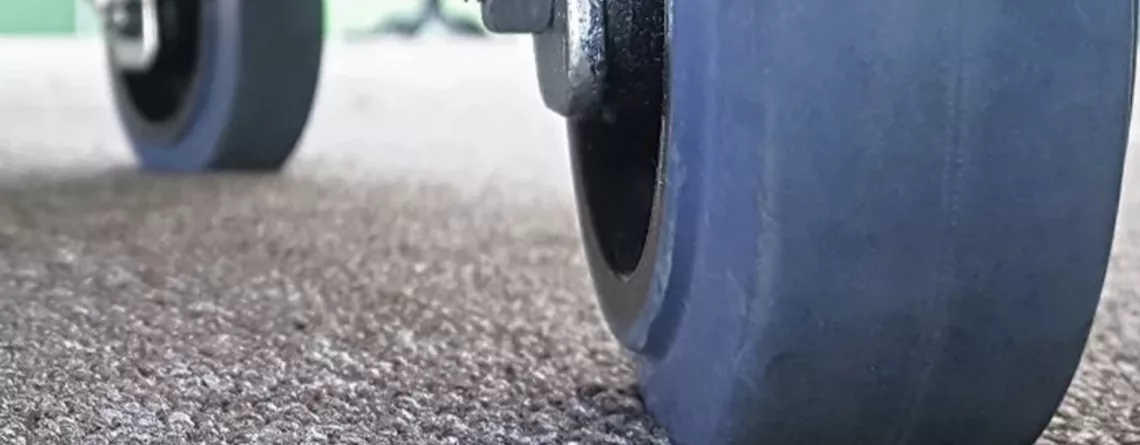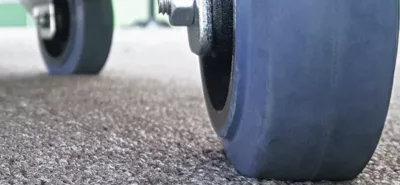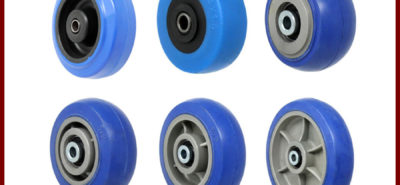
Which Polyurethane Caster Wheels Are Superior: Liquid Cast or Injection Molded?
Caster Admin2023-09-28T07:43:14-07:00Polyurethane Caster Wheels are a critical component in numerous applications, ranging from industrial machinery to everyday office furniture. They play an important role in ensuring mobility and enhancing the functionality of various equipment.
Understanding the differences between liquid cast and injection molded polyurethane is crucial as it directly impacts the wheel’s performance in specific scenarios.
Liquid Cast vs. Injection Molded: A Brief Comparison
Let’s take a look at the features of both types of wheels and their various characteristics.
Liquid Cast Polyurethane Tires






- Load and Prolonged Parking: Liquid cast polyurethane tires are indeed well-suited for applications where there will be a medium to heavy load left on the wheels, and the object is parked for a prolonged period of time. The flexibility and durability of liquid cast polyurethane allow it to withstand prolonged static loads without losing its shape or structural integrity.
- Resistance to Deterioration: These tires tend to resist deterioration, even if they are not moved frequently. They can handle long periods of inactivity without suffering from brittleness or chunking.
Caster City Manufactures liquid caster polyurethane caster wheels in the following configurations:
Detailed Characteristics of Liquid Cast Polyurethane Tires
When considering caster wheels that offer durability and resilience, especially under static pressures, liquid-cast polyurethane tires stand out. Here’s a deeper look into their attributes:
- Resilience and Adaptability: Liquid-cast polyurethane tires are highly adaptable and can bounce back from pressures and strains.
- Preferred for Durability: These tires are chosen when durability is a top priority.
- Handles Static Loads Well: Specially suited for situations where a heavy load will remain stationary for extended periods.
- Used in Heavy Equipment: Common in heavy industrial equipment and high-load warehouse carts because they don’t lose shape or strength easily, even if stationary for a long time.
- Resistance to Deterioration: These tires hold up well over time and don’t wear out quickly.
- Performs Well in Harsh Conditions: A top choice for environments with extremes, such as very high or low temperatures, or where they might come into contact with corrosive materials.







- Limited Load Support: Injection molded polyurethane wheels may not be the best choice for supporting heavy loads for extended periods, especially if they are infrequently moved. As mentioned, these wheels can become inflexible and may fail when subjected to loads after being stationary for a long time.
- Potential for Chunking: The curing process of injection-molded polyurethane can indeed result in a more rigid and less flexible tire. When these wheels are moved after months of inactivity, they can be more prone to chunking, where parts of the tire may break apart due to the loss of flexibility.
Detailed Characteristics of Injection Molded Polyurethane Wheels
For applications requiring consistent and smooth movement, injection-molded polyurethane wheels are a preferred choice. Let’s explore the specifics of their design and use:
- Optimized for Movement: Best suited for applications requiring consistent movement.
- Lightweight: Generally lighter than their liquid-cast counterparts.
- Smoother Operations: These can be designed for a quieter and smooth movement, making them ideal for places where noise is a concern.
- Common Applications: Frequently used in hospital beds, office chairs, and other light to medium-duty equipment.
- Potential Chunking Risk: These wheels can be prone to breaking or “chunking” if left stationary for extended periods and then moved.
- Loss of Flexibility: Over time, especially with infrequent use, these wheels can lose their flexibility.
Our answer? The choice between liquid cast polyurethane and injection molded polyurethane depends on the specific needs of the application. For scenarios where you expect medium to heavy loads to be stationary for extended periods, liquid cast polyurethane tires are a more reliable choice. On the other hand, injection molded polyurethane wheels may be suitable for applications with frequent movement but can be less dependable when subjected to infrequent movement or heavy loads during extended periods of inactivity.
How to Choose: Factors to Consider
Choosing between liquid cast and injection molded polyurethane wheels involves analyzing the intended application, load requirements, and frequency of movement.
Here are a few points to consider:
- Assess the Load: Determine the average weight the wheel will support.
- Frequency of Movement: Understand how often the wheel will be in motion.
- Environment Conditions: Evaluate the conditions where the wheel will be used.
- Budget Constraints: Consider the cost implications of both types and assess which one offers the best value for your specific needs.
Check out our comprehensive variety of Polyurethane casters here.
Looking forward, innovations in materials science and manufacturing processes could lead to the development of polyurethane caster wheels with enhanced characteristics, combining the benefits of both liquid-cast and injection-molded polyurethane.
Advances may focus on improving load-bearing capacity, flexibility, and resilience, paving the way for more versatile and reliable caster wheel solutions.
Ready to elevate your caster wheel game?
Journey through our curated collection and uncover the ideal polyurethane wheel tailored to your needs. Whether you’re gravitating towards Liquid Cast Polyurethane tires or Injection Molded wheels, our selection doesn’t disappoint.
Need advice? The Caster City experts are just a call away, always thrilled to guide you in your caster wheel exploration!”






